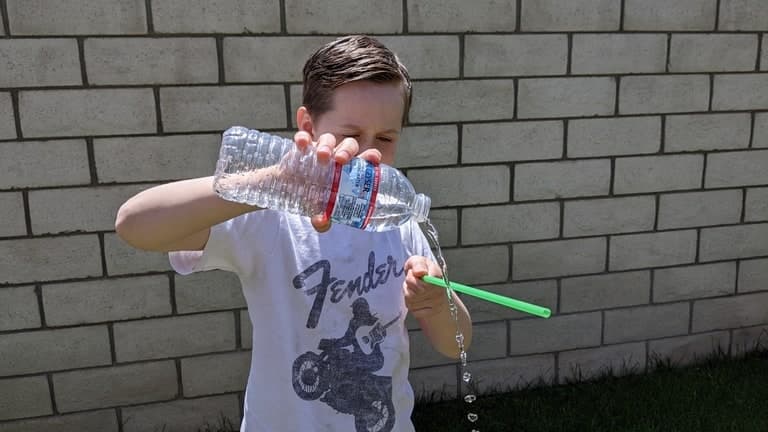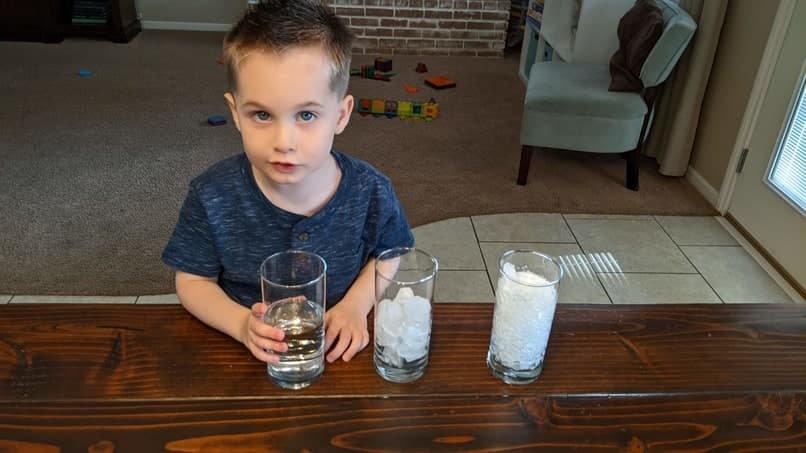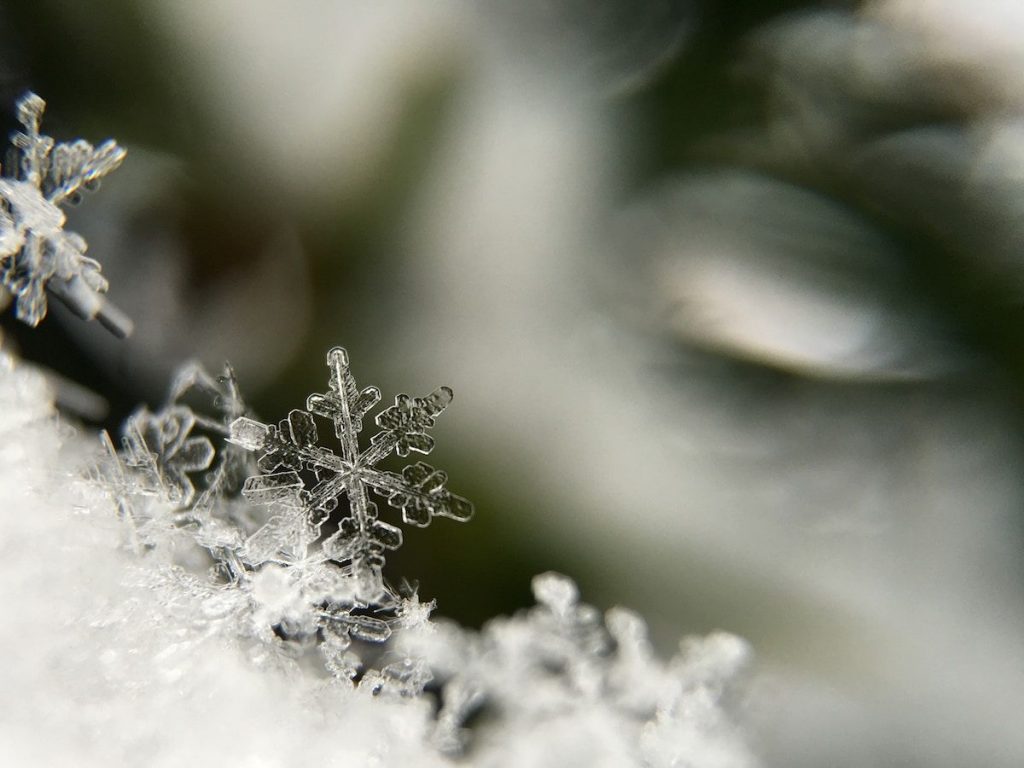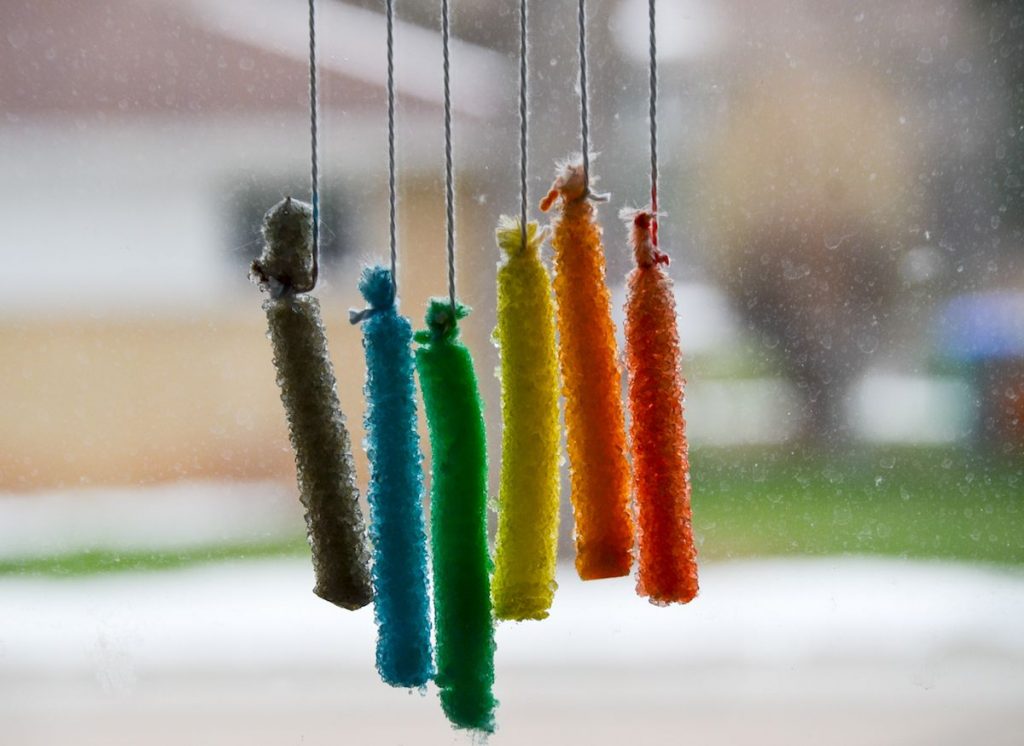As the winter season wraps the world in a frosty embrace, it offers a treasure trove of opportunities to integrate STEM disciplines into activities suited for preschoolers.
When the landscapes are painted in white and the air is crisp, incorporating activities that center around the winter themes can captivate little ones and sow the seeds of curiosity.
With simple materials often found at home, we can craft experiences that nurture fine motor skills. Carefully designed activities like building mini ice castles or crafting their own snowflakes, allow little hands to manipulate, construct, and experiment.
It’s about harnessing the magic of the season to support a fun and foundational learning experience for kids of all ages.
These winter science activities explore different STEM-related concepts, while creating a fun environment to encourage learning for young children.
Table of Contents
The Science of Water

Materials such as water, ice cubes, and even a bit of homemade fake snow provide the perfect tools for sparking imaginations and fostering critical thinking.
- Begin with a simple experiment that illustrates the transformation of water to ice.
- Hand each child a small container filled with water and have them predict what will happen when placed in the freezer. With a variety of guesses, tuck them away and during the next session, reveal the newly formed ice.
- Discuss what changes took place and why, steering the conversation towards the concepts of freezing and melting.
The transition from exploration to creation by guiding the children in making their very own “snow” using ingredients like cornstarch and shaving cream. This fun activity not only allows them to grasp the tactile differences between the states of matter but also encourages fine motor skills as their little hands mix and mold the fake snow.
Last, engage students with the scientific method by conducting an experiment on how salt affects ice. Sprinkle salt on an ice cube and observe the melting process, encouraging young scientists to hypothesize, observe, and conclude.
Not only do these activities nurture a basic understanding of the scientific method, but they also provide an interactive learning experience filled with the magic of the winter season.
Exploring Solstice Science
As the year’s shortest day approaches, preschoolers can embark on a fascinating journey through activities illuminating the winter solstice. These playful experiments and projects ignite a young child’s curiosity about Earth’s tilt and orbit, laying the foundations for understanding the changing seasons.
Through making their own sundials, little ones discover how shadows change with the sun’s position throughout the day. Using simple materials like sticks, stones, and a sunny patch, they learn to tell time and grasp the concept of solar time.
Engaging stories and visual aids help explain why the winter solstice marks a time of year with less daylight and how this impacts the environment.
Teachers and parents might introduce a globe and a flashlight to simulate the position of Earth relative to the sun, demonstrating why certain parts of the planet experience colder temperatures.
By crafting their own Earth models from clay and rotating them in relation to a light source, preschoolers can see the science in action.
Constructing Ice Castles

Inviting preschoolers to the enchanting task of constructing ice castles offers a playful yet educational activity to captivate their imagination and develop critical thinking skills.
Stacking ice cubes to build their ice castles encourages spatial awareness and problem-solving.
If possible, try using real snow on a smaller scale. Allow the children to decide where to place their snow blocks. Splitting them up into small groups helps foster teamwork and communication.
During this constructive play, children discover the basics of insulation and structural integrity. This hands-on learning experience plants the seeds for understanding more complex concepts in science and engineering in the future.
As preschoolers immerse themselves in building these miniature icy kingdoms, they are not just playing. They are unwittingly applying principles of physics, exploring the states of matter as snow melts and refreezes, and experiencing the joy of seeing their own frosty blueprints come to life.
Catapulting Snowballs Indoors
Imagine transforming the living room into a miniature winter battlefield where physics reigns supreme. Building a miniature snowball catapult with preschoolers does just that.
By using simple materials like plastic or wooden spoons, rubber bands, and popsicle sticks, young scientists get a hands-on lesson in energy transfer and projectile motion.
- Begin by securing a spoon to the edge of a popsicle stick, using rubber bands for tension. This forms the arm of the catapult.
- Next, they cradle a mini marshmallow or cotton ball ‘snowball’ into the spoon. When they press down on the spoon’s tip, they store potential energy—ready for launch.
- With a flick of their fingers, potential energy transforms into kinetic energy as the snowball soars through the air.
- The excitement on their faces is undeniable as they watch their snowy projectiles fly.
They’re not just playing; they’re problem solvers adjusting angles and force, making predictions, and observing outcomes, all while grasping fundamental physics concepts in a fun way.
This engaging STEM challenge sparks curiosity and lays the foundational blocks for understanding more complex scientific principles later on.
Technology in a Winter Wonderland
Get into a problem-solving quest by setting up a simple Google Maps challenge. You could start by showing children pictures of famous snowy landmarks and asking them to locate these frosty wonders on the map.
This fun activity not only supports their understanding of geography but also weaves in lessons on cardinal directions and map symbols.
By turning this into a group exercise, children also refine their team-navigation abilities and develop essential communication skills.
Another captivating experience springs from virtual tours of polar regions.
Use Google Maps!
Street View to wander through icy landscapes, introducing preschoolers to the habitats of polar bears, penguins, and other arctic animals.
Inquiring minds can’t help but engage with such interactive visuals, prompting questions and sparking discussions around the diverse climates of our globe.
Coding with a Flake of Snow

Imagine a project where preschoolers construct a snowflake using block-based coding platforms designed for kids. They can start with simple sequences, directing their snowflake’s patterns. Each block clicked into place feels like a puzzle piece found, building up their understanding of cause and effect.
For a more interactive experience (and with some adult help), kids might program a polar bear to move through a winter wonderland, seeking out fish to ‘eat.’ This introduces them to basic logic and movement commands while engaging them in a game. It’s not just a fun activity; it’s strategy and problem-solving.
You can also add an element of group interaction with a coding relay. Small groups can each contribute a part to an overarching winter tale—coded on a tablet and projected for the class.
These activities aren’t about making future programmers—it’s about making future problem-solvers.
Keep in mind that depending on the children’s age group and skill levels, some of these coding programs might be more complex and will need adult guidance.
Math Activities in a Winter Setting

This is the world where snowflakes and ice crystals become tools for learning, and counting transforms into a playful endeavor amidst a snowy landscape.
- Begin with the basics, instilling an understanding of numbers by counting glistening snowflakes cut from paper or sparkling ice cubes extracted from the freezer.
- Little hands can sort them by size or color, building a foundation in classification and sequencing.
- Introduce pattern recognition by stringing white and blue beads into a winter bracelet, alternating colors to create a rhythmic sequence. This activity not only hones math skills but also fine-tunes motor abilities.
- Extend the complexity by encouraging preschoolers to predict which bead comes next in a given pattern, a precursor to more advanced mathematical thinking.
For a tactile experience, invite young ones to roll dice and add the correct number of miniature marshmallows to a cup of hot cocoa, each piece representing a number counted out loud. This activity bridges sensory with mathematical concepts.
By integrating math activities with elements of the winter season, education becomes not just informative, but memorable.
Patterns with Paper Snowflakes
This enjoyable craft not only captivates little hands but also introduces them to basic concepts like symmetry and pattern recognition.
- Begin by gathering plain white paper and scissors—these simple materials are all you need to create magic.
- Fold the paper into a square, then fold it in half diagonally to make a triangle. Repeatedly fold this triangle in halves or thirds, creating a smaller, more intricate shape each time.
- With the paper tightly folded, invite the kids to make small cuts along the edges of the triangle. Explain how each cut-away will form part of their unique snowflake.
- Encourage them to experiment with different shapes and sizes of cuts. The lesson here is about cause and effect and predicting patterns.
Remind them that no two snowflakes are the same—each cut creates a new design.
Finally, unveil the magic by slowly unfolding the paper to reveal a delicate snowflake pattern.
Display the snowflakes against a window or hang them from the ceiling to appreciate their beauty and uniqueness.
Creating Crystal Snowflakes

This delightful STEM activity not only introduces young minds to the beauty of science but also allows them to explore the world of crystal formation.
Start by gathering these materials: pipe cleaners, borax, string or yarn, popsicle sticks or pencils, wide-mouthed jars or containers, boiling water, and blue food coloring.
Encourage preschoolers to bend and twist the pipe cleaners to create unique snowflake shapes. Discuss the symmetry and beauty of real snowflakes.
- Attach string or yarn to each pipe cleaner snowflake with enough length for the snowflake to hang in the Borax solution.
- In a wide-mouthed jar or container, mix boiling water with Borax and stir until the Borax is fully dissolved. It is important to help young kids with this step! Here you can add blue food coloring (or any color) to give the crystals a hue.
- Attach the snowflake to a pencil or popsicle stick. Place the snowflake on top of the jar and let the snowflake sit in the Borax solution overnight.
- The next day, marvel at the mesmerizing crystal snowflakes that have formed on the pipe cleaners. Take this opportunity to discuss the chemical reaction that took place.
Encourage preschoolers to observe intricate patterns and discuss the science behind crystal growth. Use a magnifying glass to get a closer look at the crystal formation. Watch their smiles emerge as they get to discuss their own crystals to the group.
Once the snowflakes are fully formed, remove them from the solution and allow them to dry. Hang them up showcasing each child’s very own creation.
This fun experiment captivates preschoolers with the allure of winter and introduces them to the basic principles of chemistry and crystallography in a fun hands-on way.
Snowman Challenge
If you live in an area that gets snow, a Snowman Challenge combines the whimsy of snowman building with fundamental STEM concepts. This hands-on activity encourages preschoolers to explore engineering, physics, and creativity while constructing their very own frosty friend.
- First, you will want to gather some supplies such as buttons, sticks, stones, scarves, hats, carrots, measuring tools, and a timer.
- Next, discuss the basic structure of a snowman and how it relies on balance and stability. Introduce terms such as “base,” “middle,” and “top” to describe the different sections.
- Guide the children in packing snow to create the base, middle and top sections of their snowmen.
- As the snowman takes shape, discuss the importance of each accessory. Why do snowmen wear scarves? How do buttons stay attached? This provides an opportunity to discuss friction and adhesion.
- Turn the activity into a friendly competition by setting a timer or measuring which group created the tallest snowman.
After the challenge, gather the children to reflect on their snowman-building experience. This is a great way to discuss what worked well and what could be improved, encouraging them to think like engineers.
If the weather permits, observe the snowman over time as it melts naturally.
The snowman challenge is not only a great time, but also transforms a classic outdoor activity into a rich STEM learning experience.
Final Frosty Thoughts
As the winter air nips at your nose and tiny mittens eagerly reach for new adventures, let these winter themed STEM challenges spark joy in the eyes of preschoolers.
Whether you’re crafting snowflakes or building snowball catapults, the true magic lies in the shared moments of discovery and learning.
Author: Krissy Hadick
Krissy Hadick, a devoted mother and loving wife. With a Master’s degree in Anthropology, Krissy shares a unique blend of academic insights with hands-on-motherhood on her site The Hadicks. Combining information from articles, resources, and personal anecdotes, she aims to be a source of inspiration and guidance for parents and parents-to-be.








